-
 Bitcoin
Bitcoin $105,953.9980
3.06% -
 Ethereum
Ethereum $2,445.3292
6.68% -
 Tether USDt
Tether USDt $1.0006
-0.03% -
 XRP
XRP $2.1968
7.03% -
 BNB
BNB $643.2903
2.13% -
 Solana
Solana $144.2799
3.82% -
 USDC
USDC $1.0000
-0.03% -
 TRON
TRON $0.2739
0.49% -
 Dogecoin
Dogecoin $0.1642
4.47% -
 Cardano
Cardano $0.5834
5.49% -
 Hyperliquid
Hyperliquid $38.0741
2.80% -
 Sui
Sui $2.7741
7.56% -
 Chainlink
Chainlink $13.4107
11.26% -
 Bitcoin Cash
Bitcoin Cash $450.4828
-0.61% -
 UNUS SED LEO
UNUS SED LEO $9.1301
0.64% -
 Stellar
Stellar $0.2476
5.49% -
 Avalanche
Avalanche $18.0637
5.09% -
 Toncoin
Toncoin $2.9066
2.43% -
 Shiba Inu
Shiba Inu $0.0...01160
4.01% -
 Hedera
Hedera $0.1527
8.00% -
 Litecoin
Litecoin $84.6122
2.37% -
 Monero
Monero $317.6076
5.76% -
 Ethena USDe
Ethena USDe $1.0008
0.02% -
 Polkadot
Polkadot $3.4519
5.27% -
 Dai
Dai $1.0000
-0.03% -
 Bitget Token
Bitget Token $4.2835
5.62% -
 Uniswap
Uniswap $7.0443
9.78% -
 Pepe
Pepe $0.0...09964
7.41% -
 Pi
Pi $0.5391
4.64% -
 Aave
Aave $264.1743
11.26%
What does it mean when the fast line of the stochastic oscillator falls below the slow line?
When the stochastic oscillator's fast line falls below the slow line, it signals weakening bullish momentum and a potential bearish reversal in crypto markets.
Jun 24, 2025 at 07:07 pm
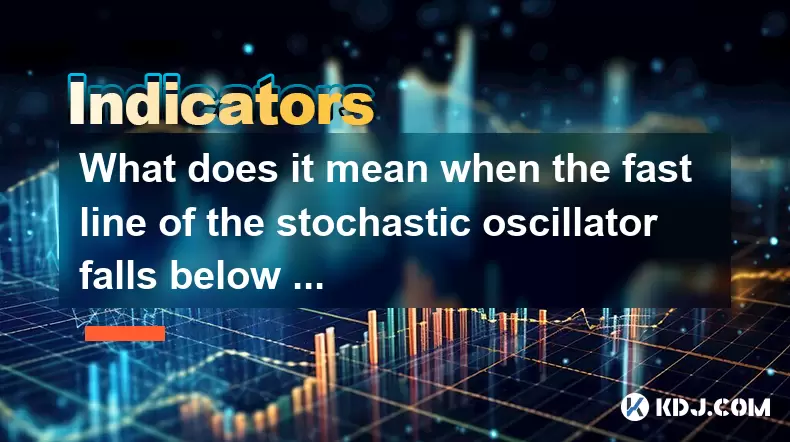
Understanding the Stochastic Oscillator
The stochastic oscillator is a momentum indicator used in technical analysis to assess overbought or oversold conditions in financial markets, including cryptocurrencies. It consists of two lines: the fast line (typically %K) and the slow line (typically %D). The fast line represents the current closing price relative to the recent trading range, while the slow line is a moving average of the fast line, usually a 3-day simple moving average.
When analyzing crypto charts, traders pay close attention to the relationship between these two lines as they provide insights into potential trend reversals or continuations.
What Happens When the Fast Line Falls Below the Slow Line?
A key signal generated by the stochastic oscillator occurs when the fast line crosses below the slow line, especially within certain price zones. This crossover suggests that momentum is shifting from bullish to bearish, indicating a possible reversal or at least a pause in an uptrend.
In cryptocurrency trading, where volatility is high and trends can change rapidly, this signal can be crucial for timing entries or exits. However, it's essential to evaluate this crossover in context with other indicators and chart patterns to avoid false signals.
Identifying Bearish Momentum in Crypto Charts
When the fast line falls below the slow line, it typically reflects weakening upward momentum. In many cases, this happens after a period of overbought conditions (above 80 on the stochastic scale), which makes the signal more reliable.
- Look for the crossover to occur after the stochastic has been above the 80 level — this confirms prior strength before the sell-off begins.
- Check if the price action shows signs of rejection, such as long upper wicks or bearish candlestick patterns like shooting stars or engulfing candles.
- Use volume indicators to confirm that selling pressure is increasing alongside the stochastic crossover.
This combination increases the probability that a downward move will follow, especially in trending markets.
Distinguishing Between Genuine Signals and False Alarms
Not every time the fast line drops below the slow line should be interpreted as a strong sell signal. In ranging or sideways markets, stochastics can produce numerous crossovers without significant price movement.
- Confirm the direction of the broader trend using tools like moving averages or trendlines.
- Avoid acting on signals generated during neutral zones (between 20 and 80) unless supported by other technical evidence.
- Backtest historical data on specific crypto pairs to see how frequently this signal has predicted actual downtrends.
Using multiple layers of confirmation ensures traders don’t act impulsively based solely on one indicator.
Applying This Signal in Real Trading Scenarios
For active crypto traders, recognizing this crossover can help manage risk and optimize entry points. Here’s how you can apply it:
- Set up alerts on platforms like TradingView or Binance when the stochastic fast line crosses below the slow line on your preferred timeframe.
- Combine the signal with support/resistance levels — a cross below in proximity to resistance could reinforce a shorting opportunity.
- Use stop-loss orders just above the recent swing high to protect against sudden reversals or false breakouts.
It’s also important to adjust settings based on asset volatility; some traders tweak the default settings (14 periods for %K and 3 for smoothing %D) to better suit fast-moving crypto markets.
Frequently Asked Questions
Can the fast line falling below the slow line ever indicate a bullish scenario?
While this crossover is generally bearish, in some cases, particularly during deep oversold conditions (below 20), it may signal exhaustion of selling pressure rather than continuation. Traders should look for divergence or other reversal patterns to confirm a potential bullish shift.
Is the stochastic oscillator more effective on certain timeframes?
The effectiveness of the stochastic oscillator varies depending on the timeframe. On higher timeframes like 4-hour or daily charts, the signals tend to be more reliable due to reduced noise. Shorter timeframes like 5-minute or 15-minute charts may generate frequent but less meaningful crossovers.
How does the stochastic oscillator compare to RSI in identifying momentum shifts?
Both the stochastic oscillator and RSI are momentum indicators, but they measure different aspects. The stochastic focuses on price relative to its recent range, while RSI measures the speed and change of price movements. Combining both can offer a more robust assessment of market conditions.
Are there alternative versions of the stochastic oscillator that reduce false signals?
Yes, variations such as the Stochastic RSI combine elements of both RSI and stochastic calculations to filter out some false signals. Another version, the Slow Stochastic, smooths the %K line further to reduce volatility-induced crossovers. These alternatives are popular among experienced crypto traders seeking refined signals.
Disclaimer:info@kdj.com
The information provided is not trading advice. kdj.com does not assume any responsibility for any investments made based on the information provided in this article. Cryptocurrencies are highly volatile and it is highly recommended that you invest with caution after thorough research!
If you believe that the content used on this website infringes your copyright, please contact us immediately (info@kdj.com) and we will delete it promptly.
- Bitcoin's Buy Pressure: Taker Volume Signals Next Move?
- 2025-06-25 02:25:12
- Cryptos, Web3, and AI: Navigating the Future of Digital Finance in 2025
- 2025-06-25 03:10:44
- Coinbase, Shares, and Stock: Riding the Crypto Wave
- 2025-06-25 02:45:12
- Coinbase (COIN) Shares Soar: What's Driving the Rally?
- 2025-06-25 02:30:13
- Web3 AI, Polkadot, and Crypto Gainers: Decoding the Future of Digital Assets
- 2025-06-25 03:10:44
- Pi's Technicals Flash Bull Signal: Is a Comeback to $1 in Sight?
- 2025-06-25 02:45:12
Related knowledge
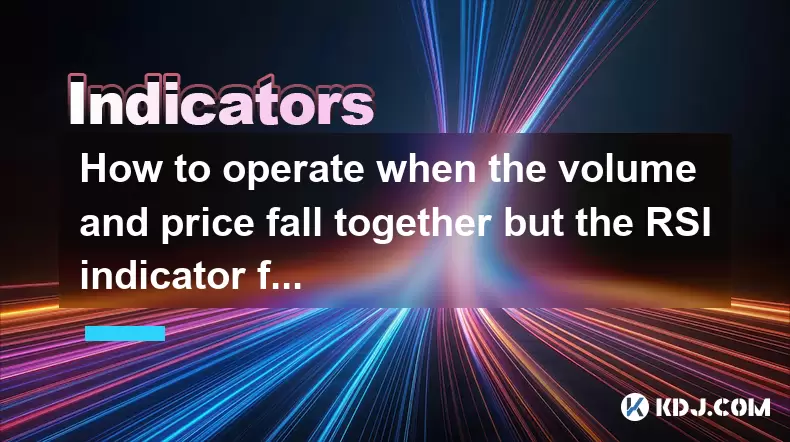
How to operate when the volume and price fall together but the RSI indicator forms a bottom divergence?
Jun 25,2025 at 04:29am
Understanding the Concept of RSI Bottom DivergenceWhen analyzing cryptocurrency price charts, traders often rely on technical indicators to spot potential reversals. One such signal is a bottom divergence in the Relative Strength Index (RSI). This occurs when the price makes a new low, but the RSI does not confirm that low and instead forms a higher low...
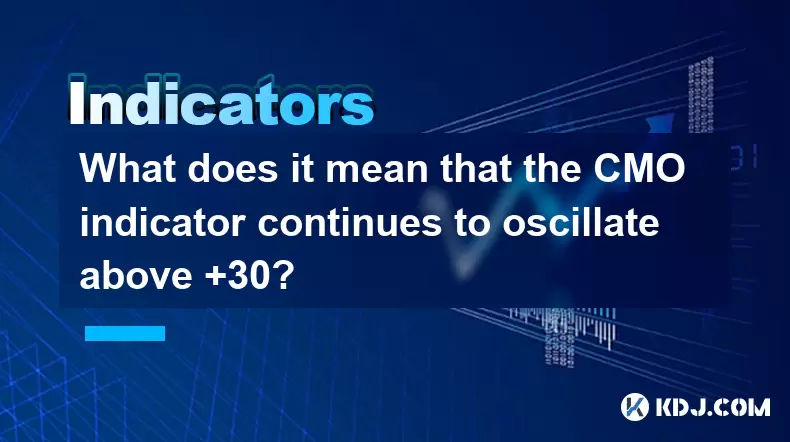
What does it mean that the CMO indicator continues to oscillate above +30?
Jun 25,2025 at 03:29am
Understanding the CMO IndicatorThe Chande Momentum Oscillator (CMO) is a technical analysis tool developed by Tushar Chande to measure momentum in financial markets. In cryptocurrency trading, the CMO helps traders identify overbought or oversold conditions and potential trend reversals. The oscillator ranges from -100 to +100, with values above zero in...

What does it mean that the ATR indicator suddenly doubles after hitting a new low this year?
Jun 24,2025 at 11:57pm
Understanding the ATR IndicatorThe Average True Range (ATR) is a technical analysis indicator used to measure market volatility. Developed by J. Welles Wilder, ATR calculates the average price range between a security’s high and low over a specific period—typically 14 periods. It does not indicate the direction of price movement but rather how volatile ...
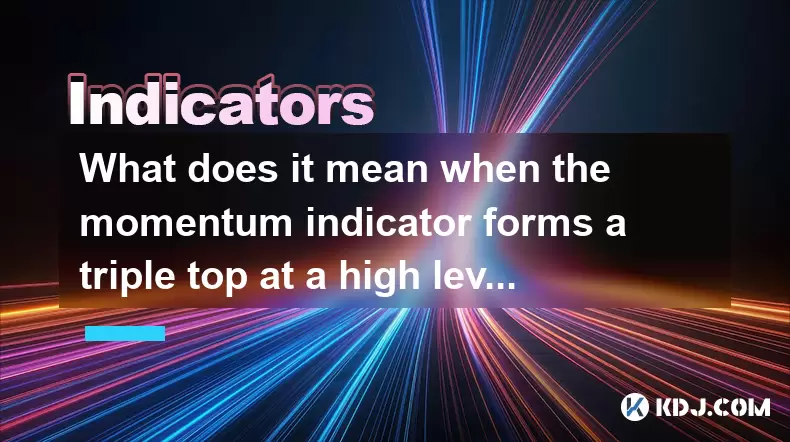
What does it mean when the momentum indicator forms a triple top at a high level?
Jun 25,2025 at 03:15am
Understanding the Momentum Indicator in Cryptocurrency TradingThe momentum indicator is a widely used technical analysis tool that measures the rate of change in price movements over a specified period. In cryptocurrency trading, where volatility is high and trends can reverse rapidly, this indicator helps traders identify potential trend reversals or c...
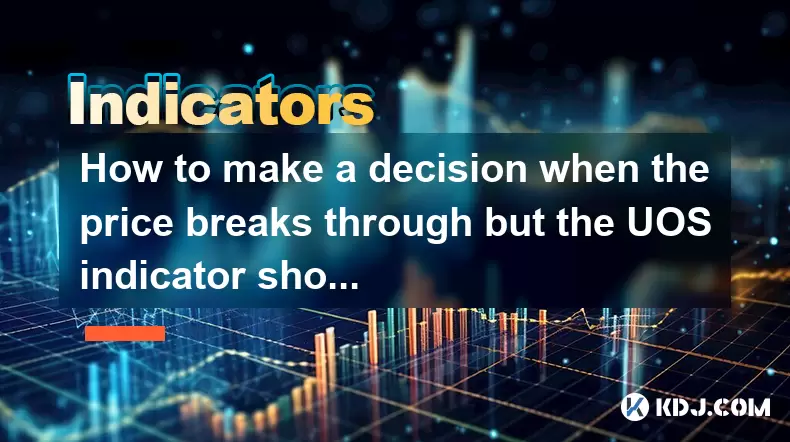
How to make a decision when the price breaks through but the UOS indicator shows a top divergence?
Jun 24,2025 at 11:42pm
Understanding the UOS Indicator and Price BreakthroughsThe Ultimate Oscillator (UOS) is a momentum oscillator that combines multiple timeframes to provide a more accurate picture of market momentum. When traders observe a price breakthrough — where the price moves above a key resistance level — but the UOS indicator shows a top divergence, it creates a ...

How to interpret the stochastic indicator being blunted for 5 consecutive days in the overbought area?
Jun 25,2025 at 03:00am
Understanding the Stochastic Indicator in Cryptocurrency TradingThe stochastic indicator is a momentum oscillator widely used in technical analysis within the cryptocurrency market. It helps traders identify overbought and oversold conditions by comparing a particular closing price of an asset to a range of its prices over a certain period. The standard...

How to operate when the volume and price fall together but the RSI indicator forms a bottom divergence?
Jun 25,2025 at 04:29am
Understanding the Concept of RSI Bottom DivergenceWhen analyzing cryptocurrency price charts, traders often rely on technical indicators to spot potential reversals. One such signal is a bottom divergence in the Relative Strength Index (RSI). This occurs when the price makes a new low, but the RSI does not confirm that low and instead forms a higher low...

What does it mean that the CMO indicator continues to oscillate above +30?
Jun 25,2025 at 03:29am
Understanding the CMO IndicatorThe Chande Momentum Oscillator (CMO) is a technical analysis tool developed by Tushar Chande to measure momentum in financial markets. In cryptocurrency trading, the CMO helps traders identify overbought or oversold conditions and potential trend reversals. The oscillator ranges from -100 to +100, with values above zero in...

What does it mean that the ATR indicator suddenly doubles after hitting a new low this year?
Jun 24,2025 at 11:57pm
Understanding the ATR IndicatorThe Average True Range (ATR) is a technical analysis indicator used to measure market volatility. Developed by J. Welles Wilder, ATR calculates the average price range between a security’s high and low over a specific period—typically 14 periods. It does not indicate the direction of price movement but rather how volatile ...

What does it mean when the momentum indicator forms a triple top at a high level?
Jun 25,2025 at 03:15am
Understanding the Momentum Indicator in Cryptocurrency TradingThe momentum indicator is a widely used technical analysis tool that measures the rate of change in price movements over a specified period. In cryptocurrency trading, where volatility is high and trends can reverse rapidly, this indicator helps traders identify potential trend reversals or c...

How to make a decision when the price breaks through but the UOS indicator shows a top divergence?
Jun 24,2025 at 11:42pm
Understanding the UOS Indicator and Price BreakthroughsThe Ultimate Oscillator (UOS) is a momentum oscillator that combines multiple timeframes to provide a more accurate picture of market momentum. When traders observe a price breakthrough — where the price moves above a key resistance level — but the UOS indicator shows a top divergence, it creates a ...

How to interpret the stochastic indicator being blunted for 5 consecutive days in the overbought area?
Jun 25,2025 at 03:00am
Understanding the Stochastic Indicator in Cryptocurrency TradingThe stochastic indicator is a momentum oscillator widely used in technical analysis within the cryptocurrency market. It helps traders identify overbought and oversold conditions by comparing a particular closing price of an asset to a range of its prices over a certain period. The standard...
See all articles
























































































